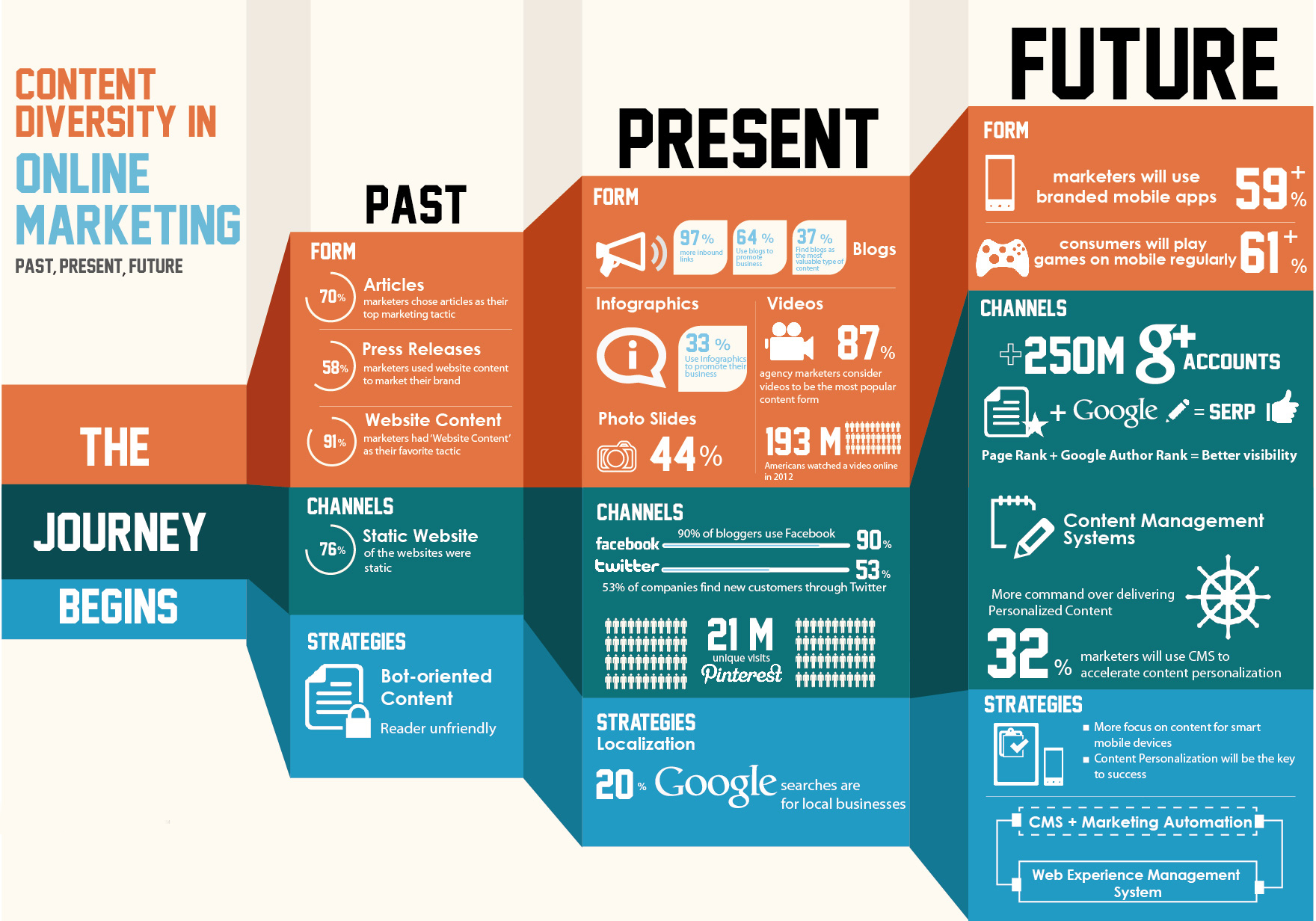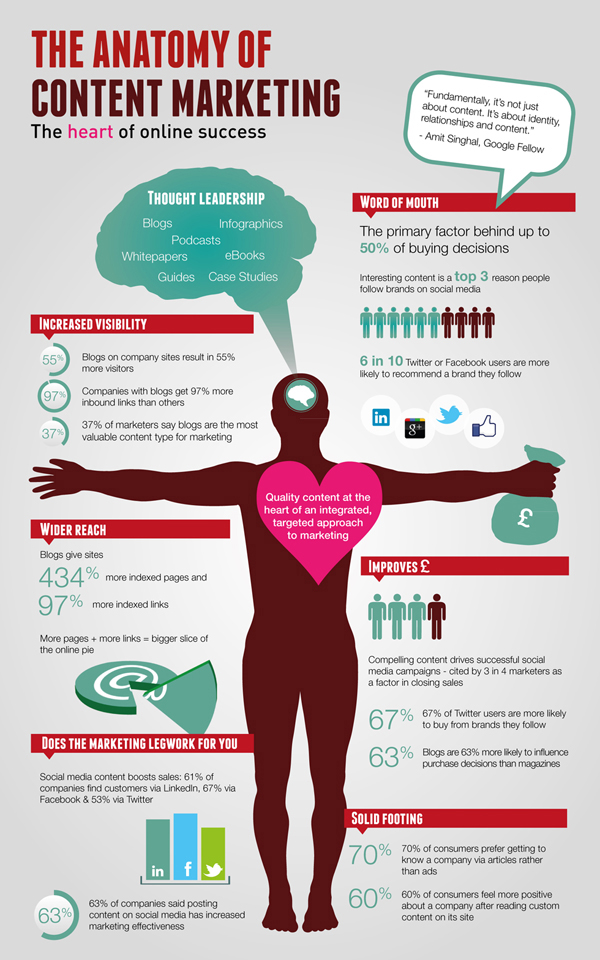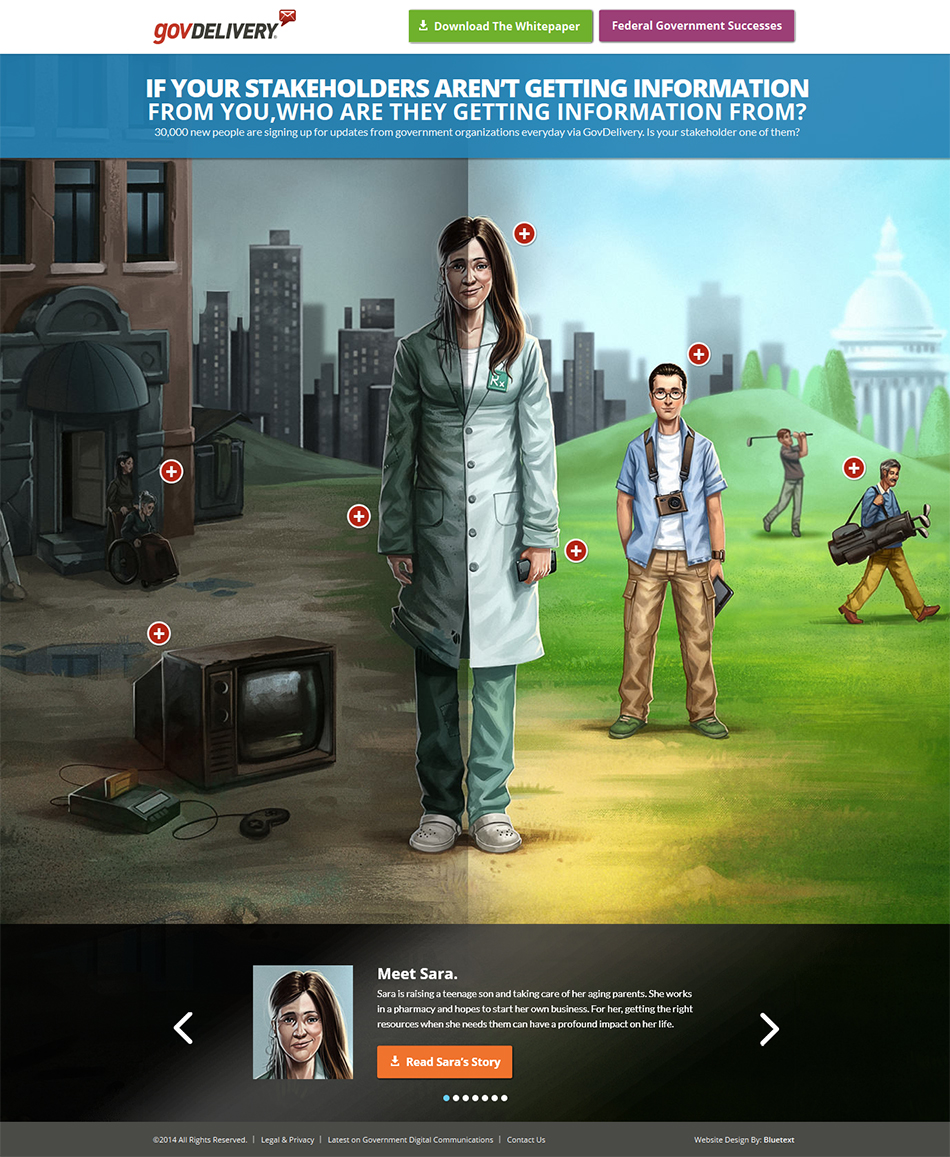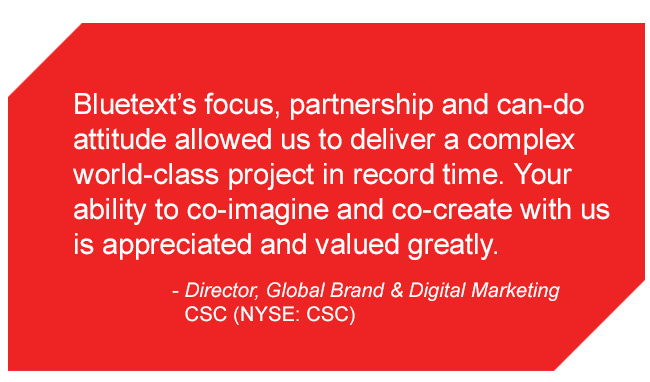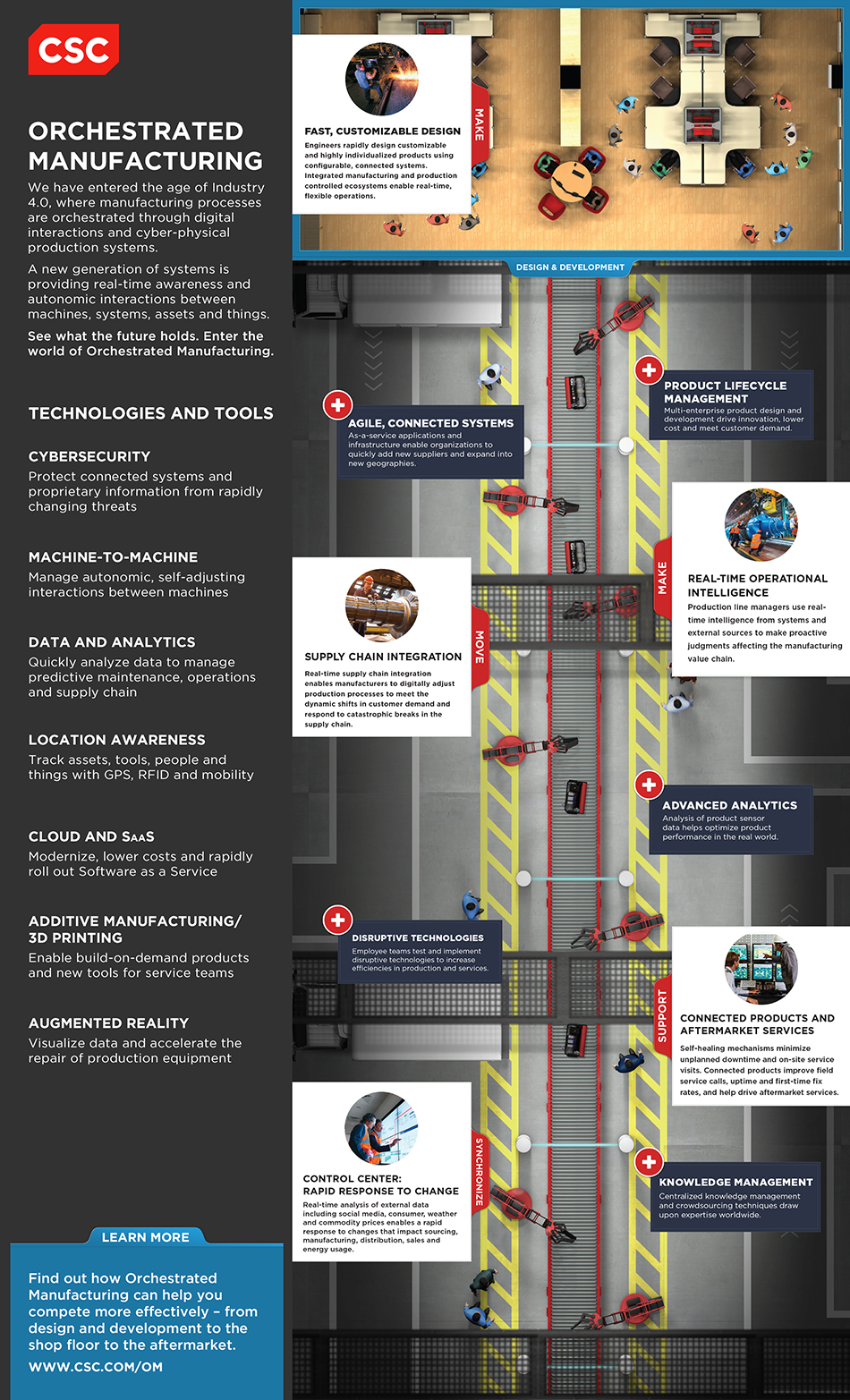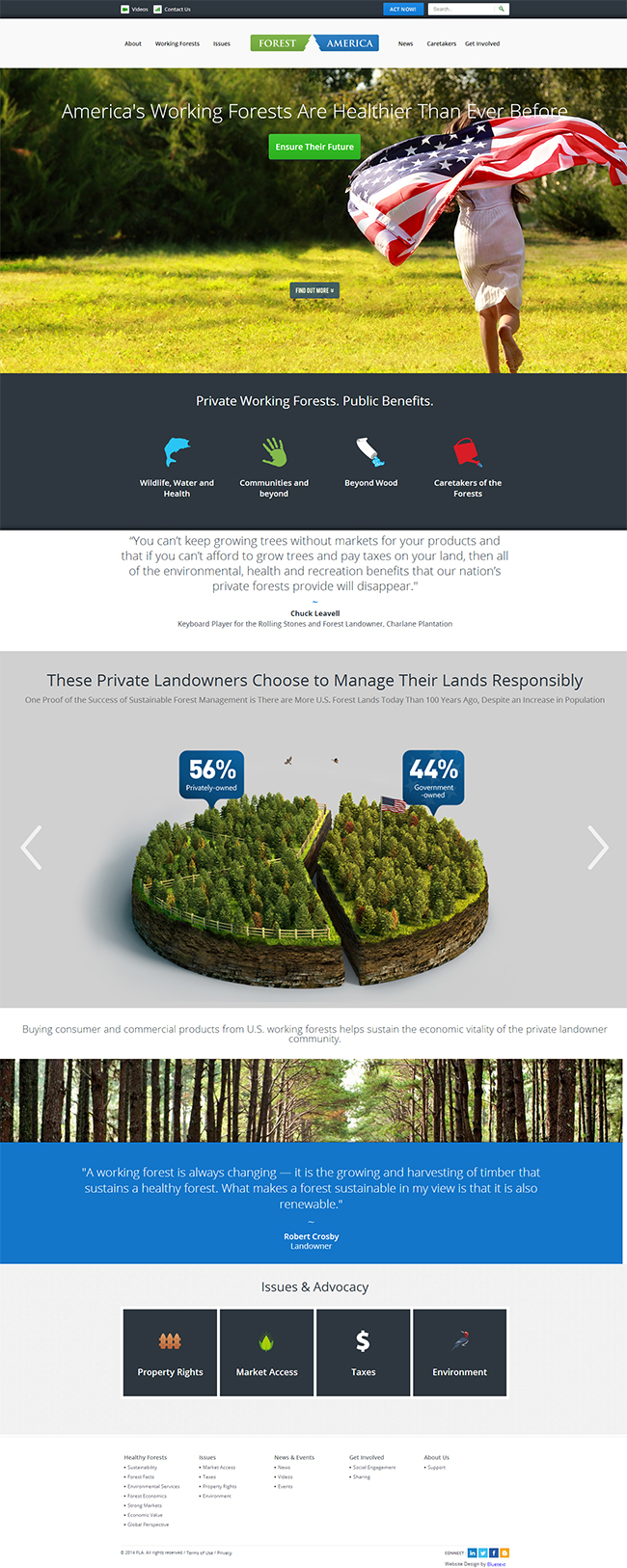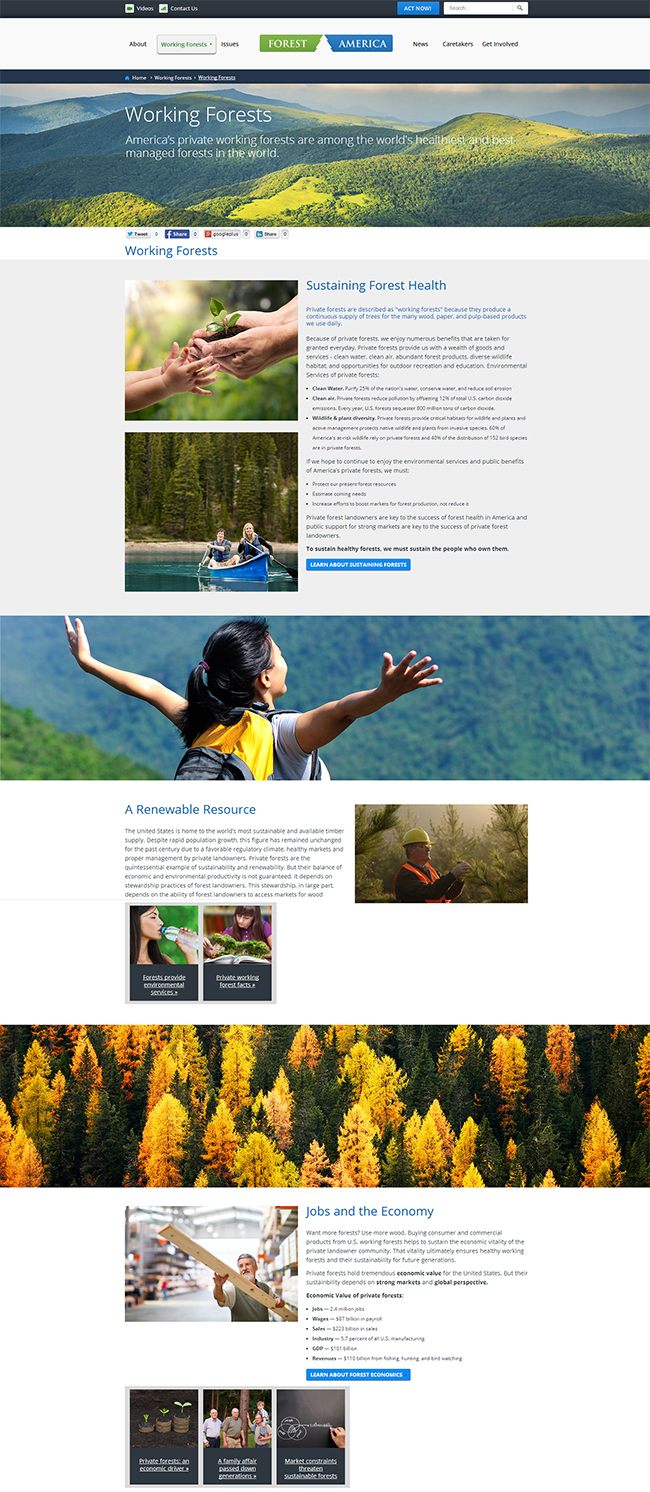As trends and technologies continue to accelerate at a pace faster than many marketers can match, the New Year is going to provide even more challenges for business-to-business marketers. With that in mind, here are what I believe are the top five most essential strategies you need to consider for 2015.
Omni-Channel Marketing
B2B marketers have been disproportionately focused on the shiny new marketing toy du jour – from mobile to display to social media to content marketing and back to mobile. With the rapid growth of digital consumption and what seems like the daily proliferation of social media channels, marketers are faced with more choices than ever when considering how they want to reach the business customer.
With each choice comes a certain amount of risk as marketers choosing to put a heavy investment in one channel may miss the untapped potential of another. This leaves a smaller margin for error as highly informed business consumers have become acutely aware of how to seek out information across a myriad of interactive channels, poll their networks and complete transactions.
Any effective B2B marketing strategy for 2015 should be one that integrates every channel across every device. This approach requires marketers – with the help of their agency – to understand the experience the customer is seeking when interacting with their brand. Omni-channel is a reflection of the wide variety of choices that customers have in how they engage a brand. The successful brand will enable their prospects to use all of the available channels.
Micro-Targeting
The proliferation of mobile, search and social analytics give us marketers all the tools we need to develop custom B2B strategies to hyper-target target customers with surgical precision – allowing us carve out the waste of traditional print and broadcast media and touch each prospect with the near intimacy of a one-to-one conversation.
Critical to creating these targeted messages is knowing who you’re talking to. Developing buyer personas allows you to craft and aim your marketing messaging with a higher degree of accuracy. As a digital-first agency, every campaign we develop is informed by the buyer personas of our clients. We look to yield as much information on these personas as possible, honing in on attributes such as their challenges, goals, background and the channels they use to research their decisions.
Committing to persona development lets you deep dive into needs, lifestyle, and motivations of your buyers. The work is well worth the results, which is the ability to construct more relevant content strategies throughout the buying cycle, post-purchase efforts, and account-based marketing activities. The more we understand their pains, the better we can create content that will point them in the right direction to address that pain.
Social Advertising
A dramatic shift has already begun towards paid social media advertising, a result of the decline in organic reach as social networks surge in popularity. This is a natural result of the growing competition for audience across these social platforms from bigger brands with more resources to spend on both organic and paid social.
As social networks and large publishers move away from earned media and towards paid media, B2B marketing teams will have to spend more time – and money – investing in paid or sponsored placements to engage hard-to-reach business targets. Changes to the Facebook algorithm in late 2013 have already produced a 44 percent decline in non-sponsored brand content in users’ newsfeeds. LinkedIn, Twitter, and even Pinterest now offer sponsored content placements and ads that promise specific reach.
The days of free social exposure are over and the only way to gain mindshare over the competition is to establish a budget to supplement your organic storytelling.
The key is to invest in those social properties that are working best for you and reinforce posts with strong calls to action (CTAs) and other supporting elements. For example, rather than embedding a link to a whitepaper download in the post, send interested users to a content landing page to extend the conversation. Then split test CTAs so you can get the right piece, in the right place, at the right time to further optimize every dollar spent.
Mobile
With more than 50 percent of internet traffic coming from mobile devices, B2B marketers must keep in mind that business prospects are still the same consumers outside of work that expect the same kind of omni-channel access to the types of digital experiences that consumer brands offer.
As B2B marketers, our challenge is to create these digital experiences to fit the preferences and needs of our buyer persona. More and more B2b brands are achieving omni-channel success with highly targeted digital properties that speak to very specific business users. And these efforts aren’t just flashy websites. They fold in mobile-optimized elements, offline activities and dynamic content offers to round out the personalized digital experience.
The key is to consider a “mobile-first” digital strategy so that it incorporates the totality of your content marketing and distribution strategy into dynamic display technology that adjusts content offers and image sizes based on the users’ screen resolution. Mobile is quickly becoming the hotbed of engagement in B2B marketing – if there is one race where you don’t want to get left behind – this is it.
High-Quality Visual Content
As brands turn into publishers, their content needs will span beyond grammatical accuracy and into the finer points of writing compelling copy adaptable across omni-channel platforms, crafted to resonate with the hyper-targeted personas we talked about above.
We are in an age of visual content where the need for well-crafted copy and visuals goes hand-in-hand. Unfortunately, one of the content marketers’ consistent pain points is not being able to produce enough to fill their content pipelines. This has lead forward-thinking marketers to seek out experienced agencies that specialize in creating masterfully written and visually gorgeous content specific to their buyer persona.
To do this most effectively, you must develop in-depth creative briefs with documentation that provides a complete view of what you’re trying to accomplish. Why?
- Articles with images get 94 percent more total views
- Including a Photo and a video in a press release increases views by over 45 percent
- Sixty percent of buyers are more likely to consider or contact a business when an image shows up in a search result
- Sixty-seven percent of online buyers say the quality of a product image is “very important” in selecting a brand or purchasing a product
- Online buyers think that the quality of a products image is more important than product-specific information (63 percent), a long description (54 percent) and ratings and reviews (53 percent)
- There is a 37 percent higher level of engagement for photos over pure text
Bluetext Survey Shows How Government Executives Make IT Decisions
Survey Results in Federal Computer Week
Federal agencies can be great customers because they remain some of the biggest spenders and their budgets stay fairly stable even during economic downturns. Yet sales and marketing teams used to marketing to consumer or commercial enterprise customers often find that their efforts fall flat in the government space — wasting everyone’s time in the process.
That’s because talking to the government customer can require a different approach, including the channels used to reach that audience and the messages included. Understanding those needs and preferences can help contractors and feds alike.
We recently surveyed 150 top government executives involved in the decision-making process for IT purchases, to understand directly how they get the information that helps inform their purchasing decisions. The results provide a road map for targeting this audience — and a valuable look in the mirror for agency leaders who wonder if there are better ways to gather the information they need.
READ THE FULL STORY HERE AT FCW.COM
6 Ways Government Contractors Can Use Innovative Digital Marketing and PR Strategies To Win Business
When it comes to marketing and communications, government contractors and public sector IT providers face a set of unique challenges. For one, the customer base of Federal, state and local decision makers responsible for purchasing technology products and services – ranging from CIOs and CTOs to program managers, IT managers and procurement officers –represents a finite group that can be difficult to reach.
Compounding this predicament is the fact that government contractors must not only market their brand, product and services to these decision makers, but also time these marketing efforts strategically. This means building awareness far enough in advance of a contract award, and then sustaining marketing and PR efforts throughout what can be a multi-year process from pre-RFP to the contract award – and even beyond due to potential contract protests, delays and budgetary obstacles.
READ THE FULL BLOG POST HERE:
6 Ways Government Contractors Can Use Innovative Digital Marketing and PR Strategies To Win Business
Federal agencies can be great customers because they remain some of the biggest spenders and their budgets stay fairly stable even during economic downturns. Yet sales and marketing teams used to marketing to consumer or commercial enterprise customers often find that their efforts fall flat in the government space — wasting everyone’s time in the process.
That’s because talking to the government customer can require a different approach, including the channels used to reach that audience and the messages included. Understanding those needs and preferences can help contractors and feds alike.
We recently surveyed 150 top government executives involved in the decision-making process for IT purchases, to understand directly how they get the information that helps inform their purchasing decisions. The results provide a road map for targeting this audience — and a valuable look in the mirror for agency leaders who wonder if there are better ways to gather the information they need.
READ THE FULL STORY HERE AT FCW.COM
Are you planning to integrate or upgrade your content marketing into your online marketing strategy? Not sure where to begin? Here is a basic rundown of how to create an effective content marketing strategy.
1. Establish Your Conceptual Target
An effective content marketing strategy must begin with this first critical step. The goal is typically pursuing new customer opportunities while preserving your core customer base. Understanding who they are, where their interests lie and how to get them to take action and engage with your brand is key to developing your content strategy.
2. Don’t be a One Hit Wonder
As opposed to advertising – which is driven by “The Big Idea” – to stay fresh and engaging, your content marketing strategy needs to offer a variety of premium content on a number of contextually relevant topics When content marketing teams are under resourced, they tend to gravitate back to the big idea and get boxed into a an approach that’s not scalable long term.
3. Use an Editorial Approach
Too many content marketing programs fail in the planning phases of the program because the a long term content strategy has not been fully thought out – so the content being developed using a shoot from the hip approach tends to be more episodic than strategic. The most effective way to avoid failure is to identify specific themes for your content strategy that align with the cyclical business or personal needs of your target audience
4. Be Contextually Relevant
The content you develop must be interesting, engaging and above all else, relevant. Your conceptual target should be able to quickly connect the dots between his challenges and the capabilities you can offer to overcome them – the more contextually relevant your content is to them the easier they will be able to make that connection
5. Process Driven Approach
Since content marketing is still a relatively new approach, a lot of companies are not investing adequate resources or the defined process that planning, managing and publishing an adequate amount content requires. Building a solid content marketing workflow process, and investing in the necessary resources to implement it – whether internal or external – are critical to your success.
6. Collaboration is Key
As with any emerging marketing channel – and social media is a good example of this -there is an internal struggle over which department actually “owns” it. Until that’s figured out, many companies will make it a shared responsibility between their PR, Advertising and Creative departments – passing the content baton from one silo to the next with no clear strategy. If you must borrow the resources, make sure there is a coordinated effort to collaborate as a team on the themes, goals and structure of your content marketing program.
7. Cadence and Consistency
When creating your content strategy, be sure to decide on the frequency of your content marketing so that once your audience is engaged, they stay engaged. Having a consistent and predictable flow of content that your customer can rely on is critical to establishing brand credibility.
8. Use the Right Channels
Instead of hoping your audience stumbles upon you, be sure to publish your content where they already are – in their own environment where they will be more willing to engage. Consider promoting your content on broader social sites like Twitter can make it go viral. If the content is what readers are looking for, they won’t hesitate to share – and that’s the holy grail of content marketing.
9. Leverage SEO
A solid content marketing strategy geared toward the right audience is worthless if it doesn’t reach that audience one way or the other. One of the most effective ways to leverage that content is to employ a strong SEO strategy to incorporate keywords that your customers are using to search for the solutions you are ultimately trying to sell to them
In an era of budget cuts and dwindling resources, hundreds of government organizations are achieving real success and showing a measurable return on investment using GovDelivery’s communications platform to communicate their messages and services.
Bluetext was hired by GovDelivery to help them reach public sector organizations who can benefit with tremendous cost savings while reaching more people, automating complex communications and driving mission value through deeper engagement with the public.
Bluetext conceived and designed a responsive landing page with an infographic demonstrating the benefits of using GovDelivery for Government agencies as the centerpiece of the campaign. We also developed a responsive email template and infographic poster to be used across many marketing channels.
CSC turned to Bluetext to design and launch an industry-specific landing page around its approach to targeting the requirements of the manufacturing industry. CSC’s vision is called Orchestrated Manufacturing, and it represents an age where manufacturing processes are orchestrated through digital interactions and cyber-physical production systems. CSC is working with clients to implement advanced solutions that leverage a new generation of systems is providing real-time awareness and autonomic interactions between machines, systems, assets and things.
Bluetext worked with CSC’s digital brand marketing team, as well as their Manufacturing industry marketing team, to design a landing page unlike anything CSC has ever launched inside of its corporate domain. It includes a modern design with one long, scrolling page to showcase the vision and its practical application to the market, and then lead visitors to download key content and interact with CSC.
At Bluetext, we find that many large companies with diverse industry focuses and solution offerings sometimes make it hard for target audiences to find exactly what they are looking for. The idea behind Orchestrated Manufacturing is for CSC to tell its story in a unique way with an online and offline strategy to drive a consistent visual message into the market. The landing page is complemented with two videos that can be used by sales teams to succinctly tell the story, as well as a highly produced poster for sharing at events.
Please check it out at www.csc.com/om. We would love to hear about how you are designing landing pages targeting unique audience groups and what strategies you are finding work best.
Across the federal government, agency IT leaders demand integrated approaches to technology to tackle their most pressing mission challenges. Govplace, a leading enterprise IT solutions provider exclusively to the public sector, turned to Bluetext to develop FedInnovation (www.fedinnovation.com), a destination designed to help government agency executives get the latest information on current technology challenges and solutions for big data, cloud, security, mobility and storage. Developed in conjunction with leading technology providers including Dell, Intel Security and VMWare, it includes exclusive content, videos, blogs, and real-time social feeds.
FedInnovation represents the concept of combining relevant, fresh content, complementary offerings, and financial resources to deliver an educational platform to drive awareness and leads for Govplace across its target market.
From this platform, Govplace will drive blog posts, webinars, and other marketing programs to ensure its target audience understands the value that it, working with the leading IT providers to the Federal Government, can deliver.
The development of platform is a continued focus for Bluetext as we look to conceptualize, design and develop creative solutions that deliver measurable business impact for our clients. We are finding that the customers of our clients are demanding unique experiences with premium content delivered in an easy to consume manner. That is the goal behind FedInnovation. Explore FedInnovation today (www.fedinnovation.com).
The landowners of America’s working private forests had a large challenge: Few people outside the forest landowners community understood how private forests were different from Federal and state-owned forests, how their landowners were managing the lands in a way that was sustainable, and how as a result our private forests are healthy and growing. Instead, the image was often based on mis-impressions and confusion. The landowners asked Bluetext to develop a new organization, together with a name and logo and a website that could serve as the repository for information about our private forests, the landowners who serve as caretakers while harvesting wood sustain-ably, and the issues they were are facing.
Bluetext proposed that this new organization be called Forest America, and designed a logo that would convey the important connection between our forest landowners and the conservation that they bring to America’s forests.
Bluetext designed a comprehensive website that is responsive for all devices and that uses wide banners and paralax images to give a strong sense of the value and beauty of privately owned forests. The site makes has calls-to-action to get involved throughout its pages as part of the strategy to recruit members and advocates for Forest America.
Bluetext also designed a multi-image infographic with key industry facts that is embedded in a sliding graphic that is accessed on the lower part of the homepage. Additional graphical elements include large banner images with text and compelling photography throughout. Forest America includes social engagement links, and in its next phase will embed polling functions and advocacy tools that will not only make it an effective tool with policy makers but also generate its own content that can be pushed out through its various channels.
Forest America has all of the design features that deliver a site that can help the organization achieve its advocacy and recruitment mission with both state-of-the-art functionality and stunning creative assets.
The landowners of America?? working private forests had a large challenge: Few people outside the forest landowners community understood how private forests were different from Federal and state-owned forests, how their landowners were managing the lands in a way that was sustainable, and how as a result our private forests are healthy and growing. Instead, the image was often based on mis-impressions and confusion. The landowners asked Bluetext to develop a new organization, together with a name and logo and a website that could serve as the repository for information about our private forests, the landowners who serve as caretakers while harvesting wood sustain-ably, and the issues they were are facing.
Bluetext proposed that this new organization be called Forest America, and designed a logo that would convey the important connection between our forest landowners and the conservation that they bring to America?? forests.
Bluetext designed a comprehensive website that is responsive for all devices and that uses wide banners and paralax images to give a strong sense of the value and beauty of privately owned forests. ?The site makes has calls-to-action to get involved throughout its pages as part of the strategy to recruit members and advocates for Forest America.
Bluetext also designed a multi-image infographic with key industry facts that is embedded in a sliding graphic that is accessed on the lower part of the homepage. Additional graphical elements include large banner images with text and compelling photography throughout. ?Forest America includes social engagement links, and in its next phase will embed polling functions and advocacy tools that will not only make it an effective tool with policy makers but also generate its own content that can be pushed out through its various channels.
Forest America has all of the design features that deliver a site that can help the organization achieve its advocacy and recruitment mission with both state-of-the-art functionality and stunning creative assets.
In an effort to rally its thousands of sales and customer facing teams at its Global Sales Conference in Dallas in April 2014, CSC turned to Bluetext to conceptualize and deliver a brand launch video and interactive experience around the key technology conversations that the company is focused on for the year ahead. The concepts of partnership and innovation, based on CSC’s decades of experience, came to life in an effort to position the company for the next wave of technology trends facing enterprises across the globe.
Bluetext built a storyboard concept around the “Road to Next-Gen IT”, and designed animated illustrations weaved throughout the video to most effectively tell the story. Now Bluetext is working on a virtual briefing center where CSC’s clients and entire ecosystem can come to learn more about these key technology conversations, set to launch in the next few months.
“Your focus, partnership and can-do attitude allowed us to deliver a complex world-class project in record time. Your ability to co-imagine and co-create with us is appreciated and valued greatly.”
Director of Global Brand & Digital Marketing
CSC
